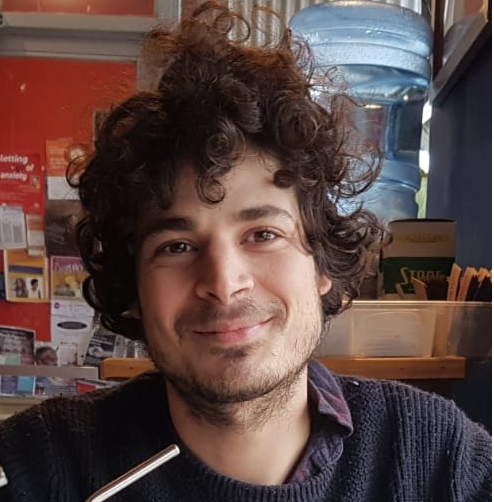Welcome to my webpage!
My name is Rémi Jaoui and I am a researcher working in the Algebra, Geometry and Logic team of the Camille Jordan Institute in Villeurbanne.
Here is a recent curriculum vitae .
Here is a short
Geometric stability theory
One of my main area of research is geometric stability theory which is a branch of model theory aimed at studying structures (M, )
By a structure
For those interested in learning more about geometric stability.
I have some papers which can be considered as papers of “pure” geometric stability theory but even these papers are considered.
Autonomous algebraic differential equations
A central object of my research are systems of autonomous algebraic differential equations which are differential equations of the form \[ P(y,y’, \ldots, y^{(n)}) = 0 \] where \(P\) is a polynomial with complex coefficients . Such a differential equation can be represented geometrically as a complex algebraic variety X (defined by \( P = 0 \) and \( \frac {\partial P} {\partial x_n} \neq 0 \)) endowed with a vector field \( v\).
Similarly, one can represent differential equations appearing in classical mechanics in this form, as long as they only involve algebraic functions. This is the case of the geodesic flows, the movement of a rotating solid and many variants of the n-body problems. Such equations are often represented as pairs \( (M,v_H) \), where \( (M,\omega) \) is a symplectic variety and \( v_H \) is the Hamiltonian function \( H \in \mathcal O (M) \)
Some motivating questions on autonomous differential equations \( (X,v) \) are:
- Can the differential equation \((X,v)\) be solved using only “classical functions”? If it is possible, can it be achieved algorithmically?
- Given a finite collection of differential equations \( (X_1,v_1), \ldots , (X_r,v_r) \), can \((X,v)\) be solved using only “classical functions” and solutions of \( (X_1,v_1), \ldots , (X_r,v_r) \) ? If it is possible, can it be achieved algorithmically?
- Do the solutions of \( (X,v) \) form large independent sets of meromorphic functions or do they share many algebraic relations?
The ``classical functions’’ contains in particular To study these questions, an important picture is the following representation of the field of meromorphic \( \mathcal M(U) \) functions on an open set \( U \subset \mathbb{C} \)
This picture should be understood as follows:
-
On the horizon stand all the meromorphic functions which are differentially transcendental over the field \( \mathbb{C}(t) \) of rational functions of one variable. Such functions play no role in the resolution of algebraic differential equations with coefficients in \( \mathbb{C}(t) \).
-
At our feet is the class \( \mathcal C_0 \) of classical meromorphic functions: containing all the rational functions, the exponential and logarithms of such functions, more generally all the Liouvillian functions of one variable. Furthermore, this class is closed under various integration procedures such as solving a linear differential equation and post-composing with an Abelian function.
The differential equations whose solutions live in the class \( \mathcal C_0 \) are often analyzed by means of Kolchin’s Galois theory.
-
A bit further is the class \( \mathcal C_1 \) obtained by adding to the class of meromorphic functions all the functions solutions of algebraic differential equation of order one: in particular, all Pfaffian functions live in the class \( \mathcal C_1 \) .
-
The higher order classes \( \mathcal C_n \) for n \geq 2 contain the solutions of higher order algebraic differential equations which are in particular not Pfaffian nor Liouvillian.
Geometric stability theory
A characteristic feature of these questions is that they can be formulated in the language of geometric stability theory at the level of the definable set associated to a differential equation \( (X,v) \) in the theory \( DCF_0\). So my point of view to study these questions is to use tools from the classical theory of differential equations and amplify them them using tools of geometric stability theory.
In the language of model theory, motivating questions are:
- Locate classical differential equations on the map of differentially closed fields provided by Zilber’s trichotomy.
- Develop effective tools to study the generic solutions of algebraic differential equation using geometric linearization data along a known particular solution.
- Study the variations of the semi-minimal analysis of a differential equations in families.
A central notion that was brought to the first plan is the notion of modularity
